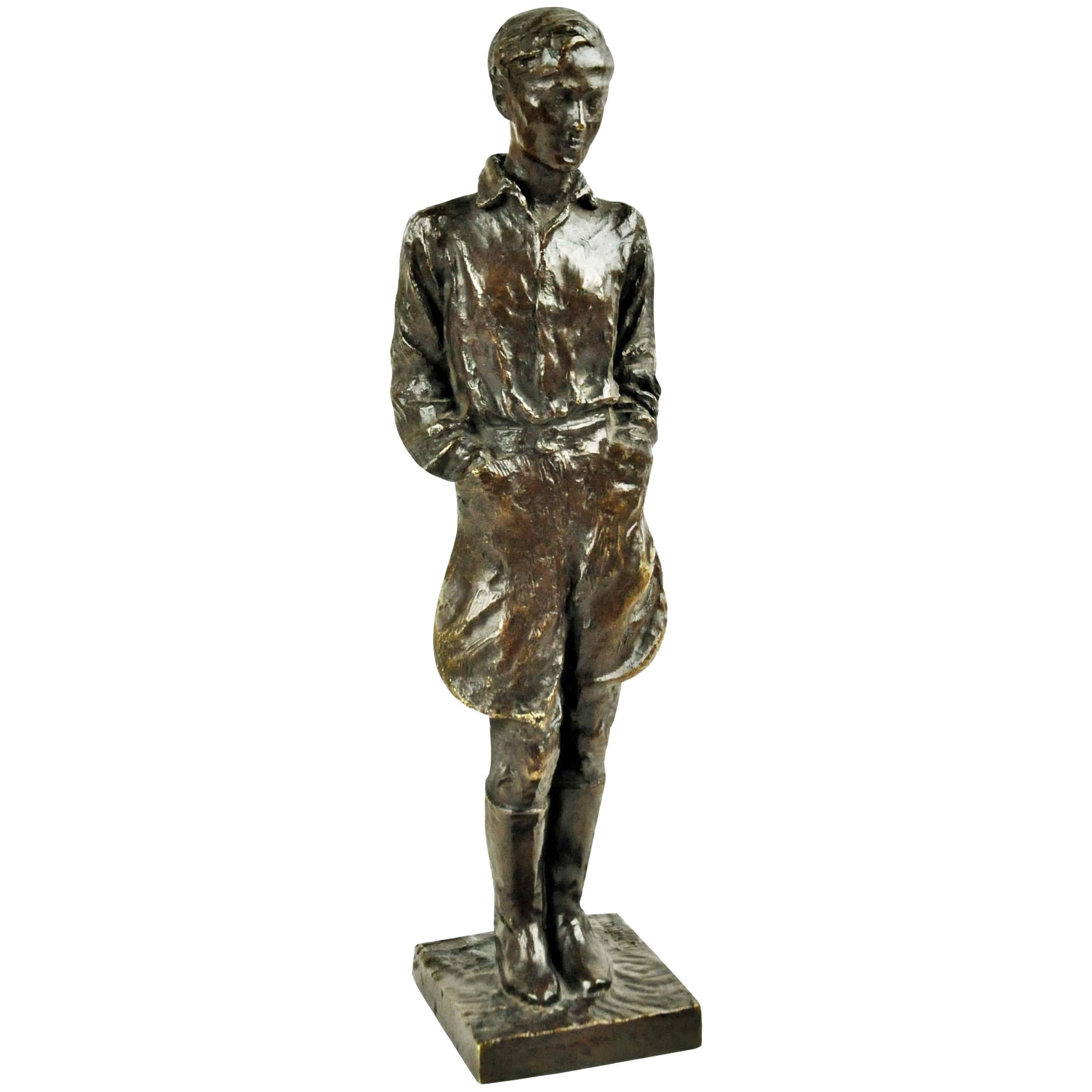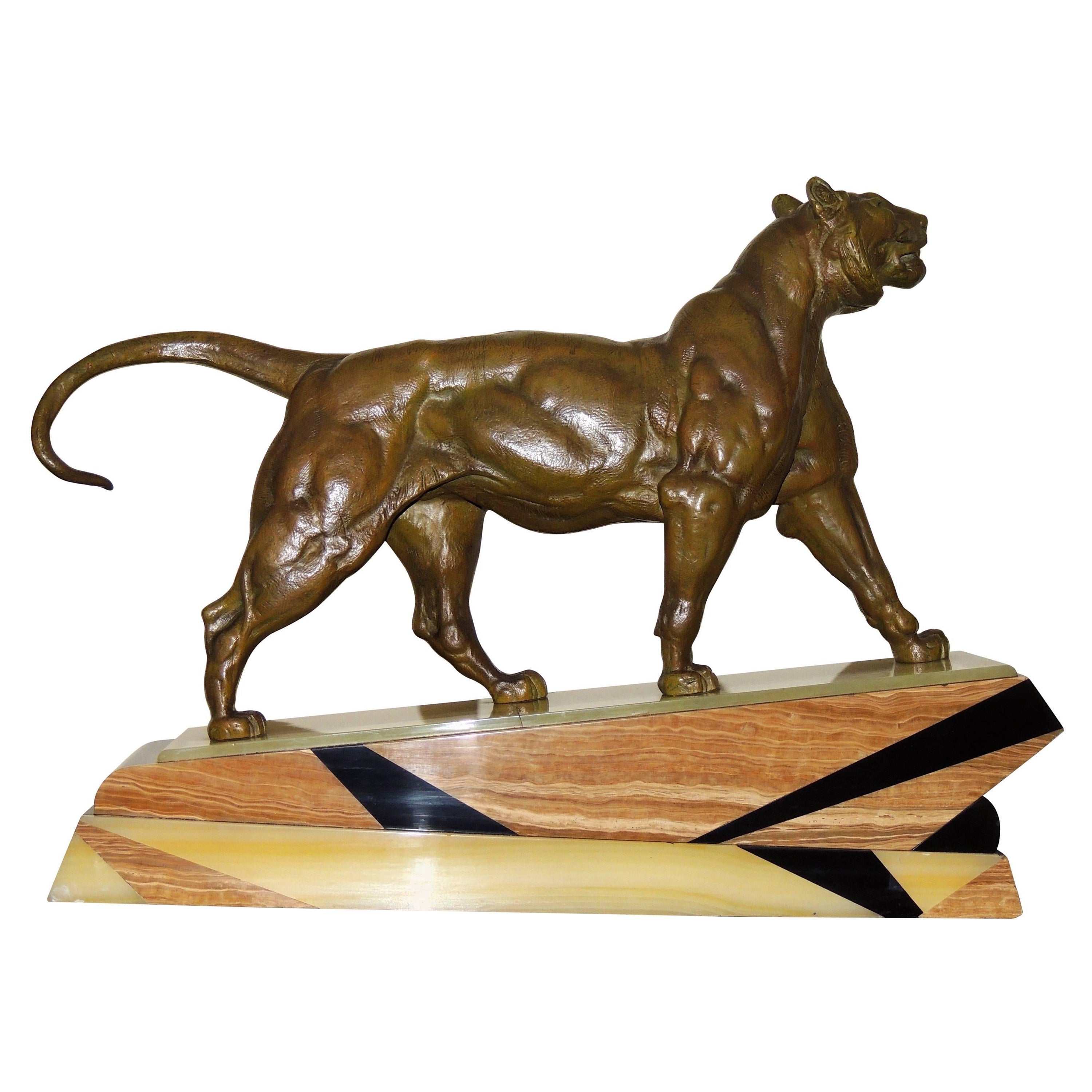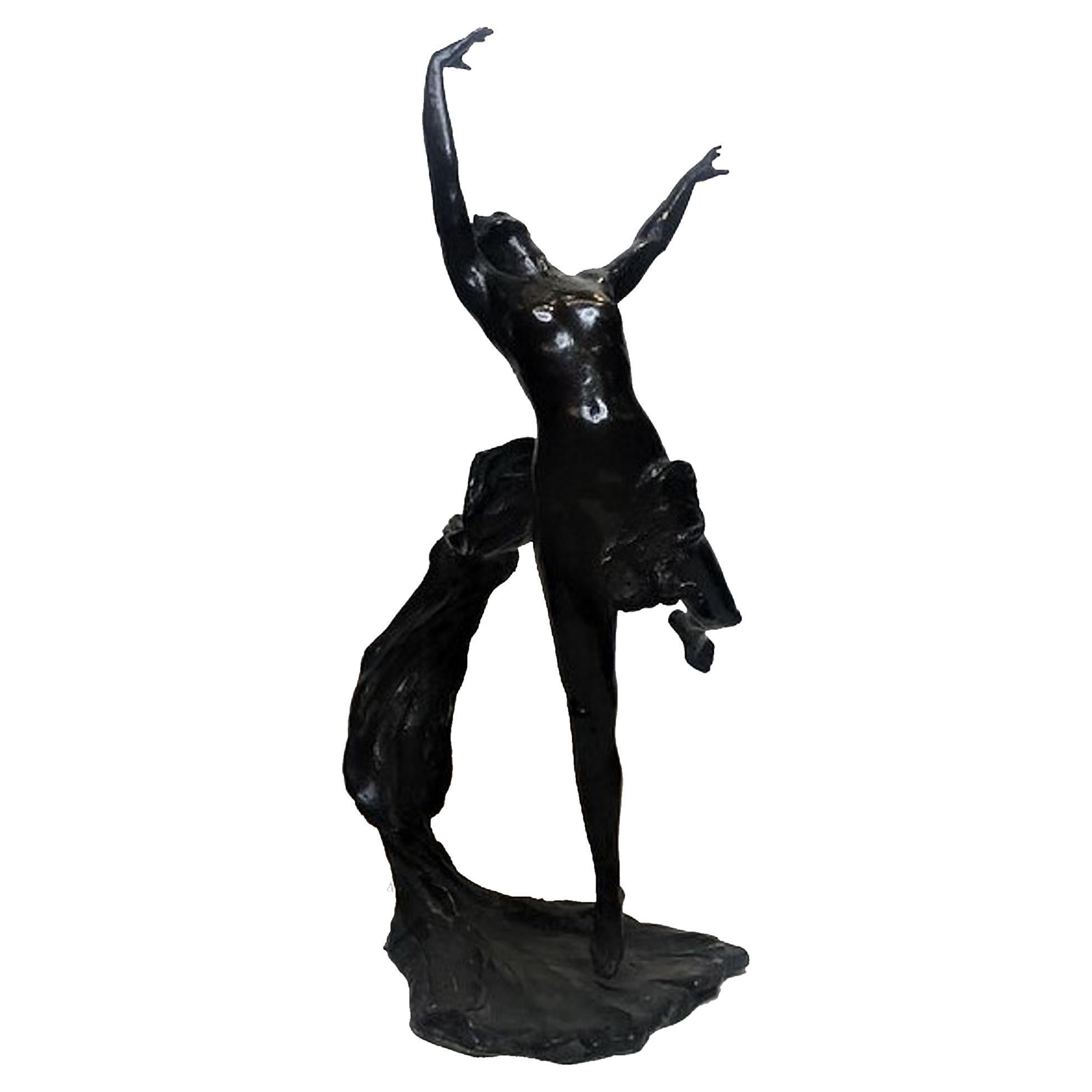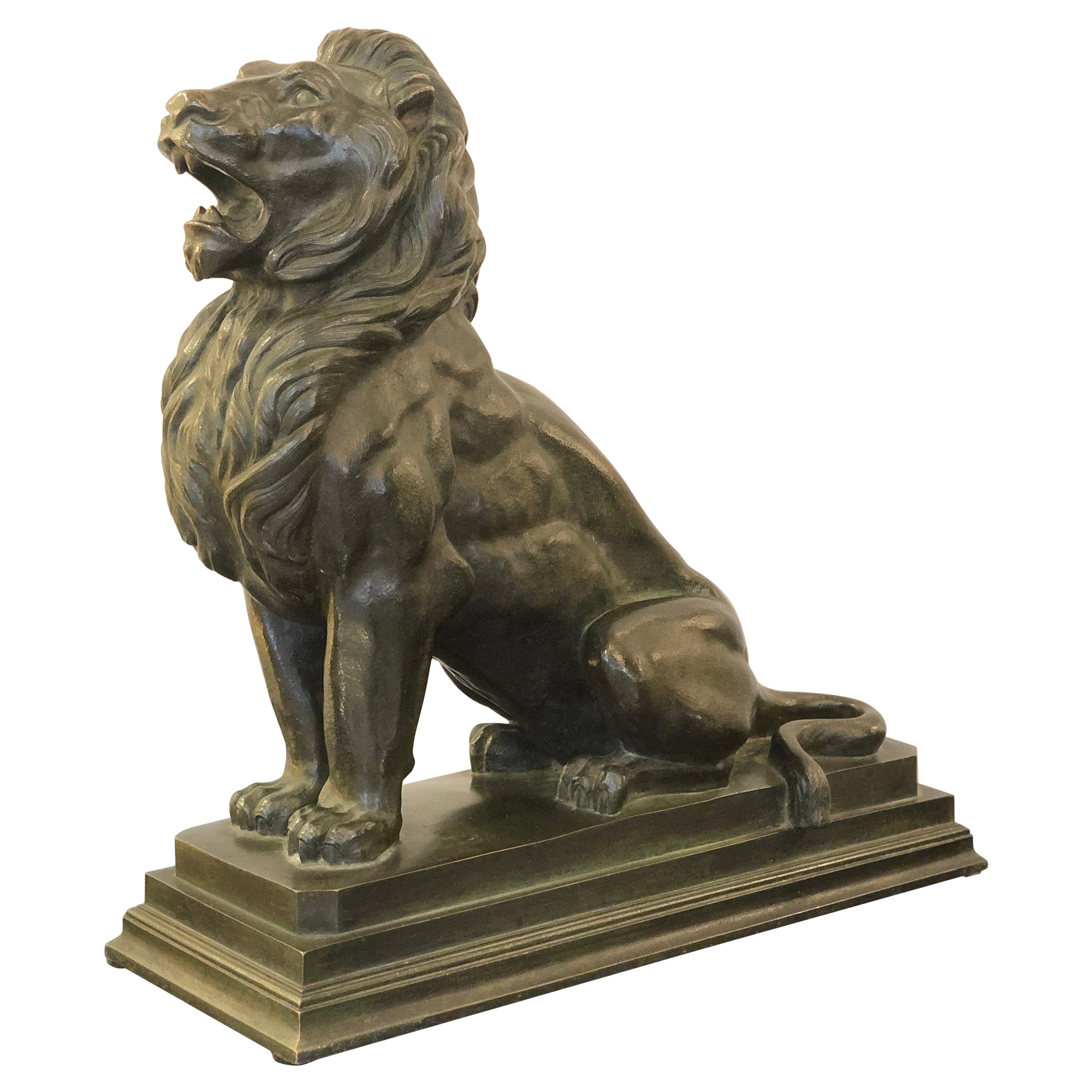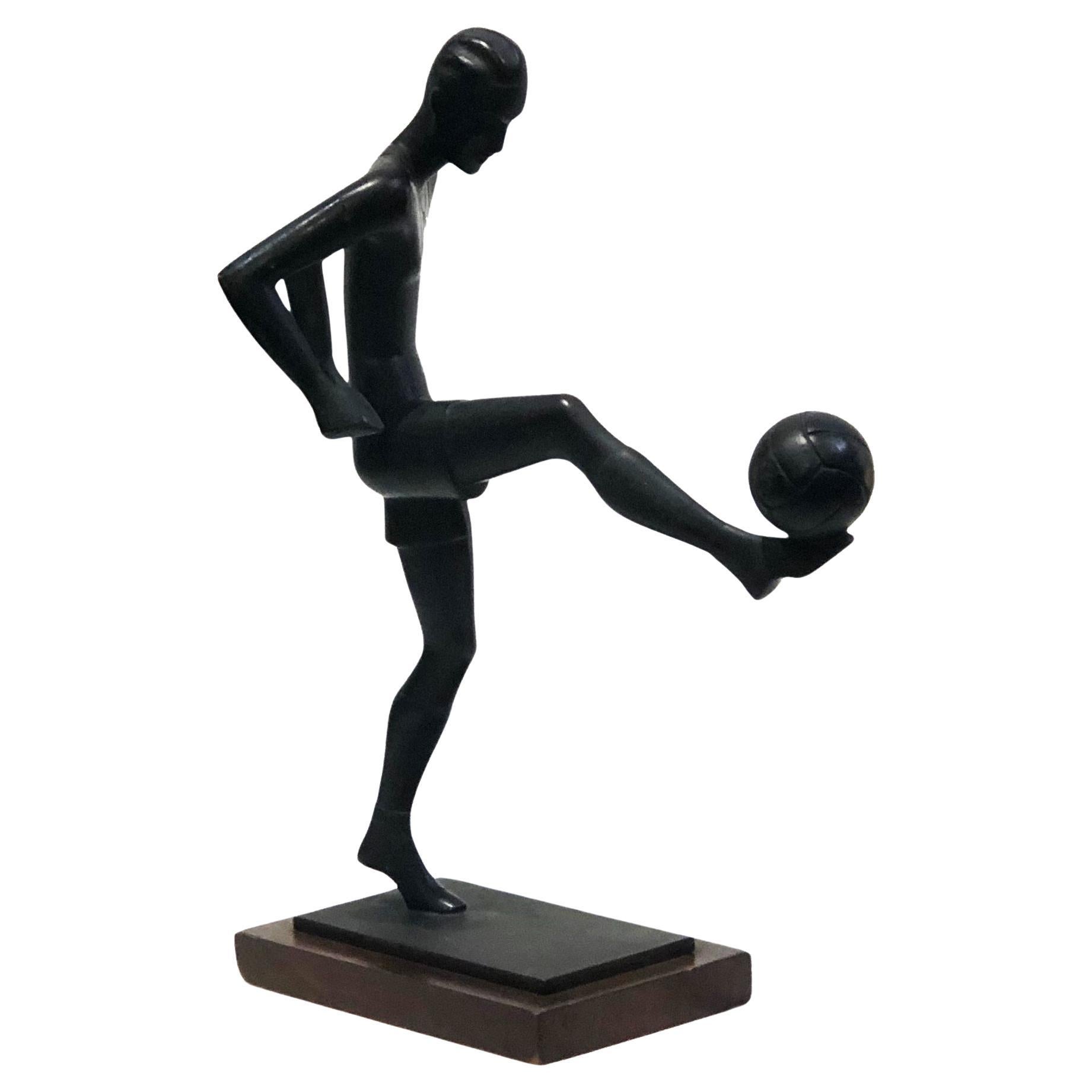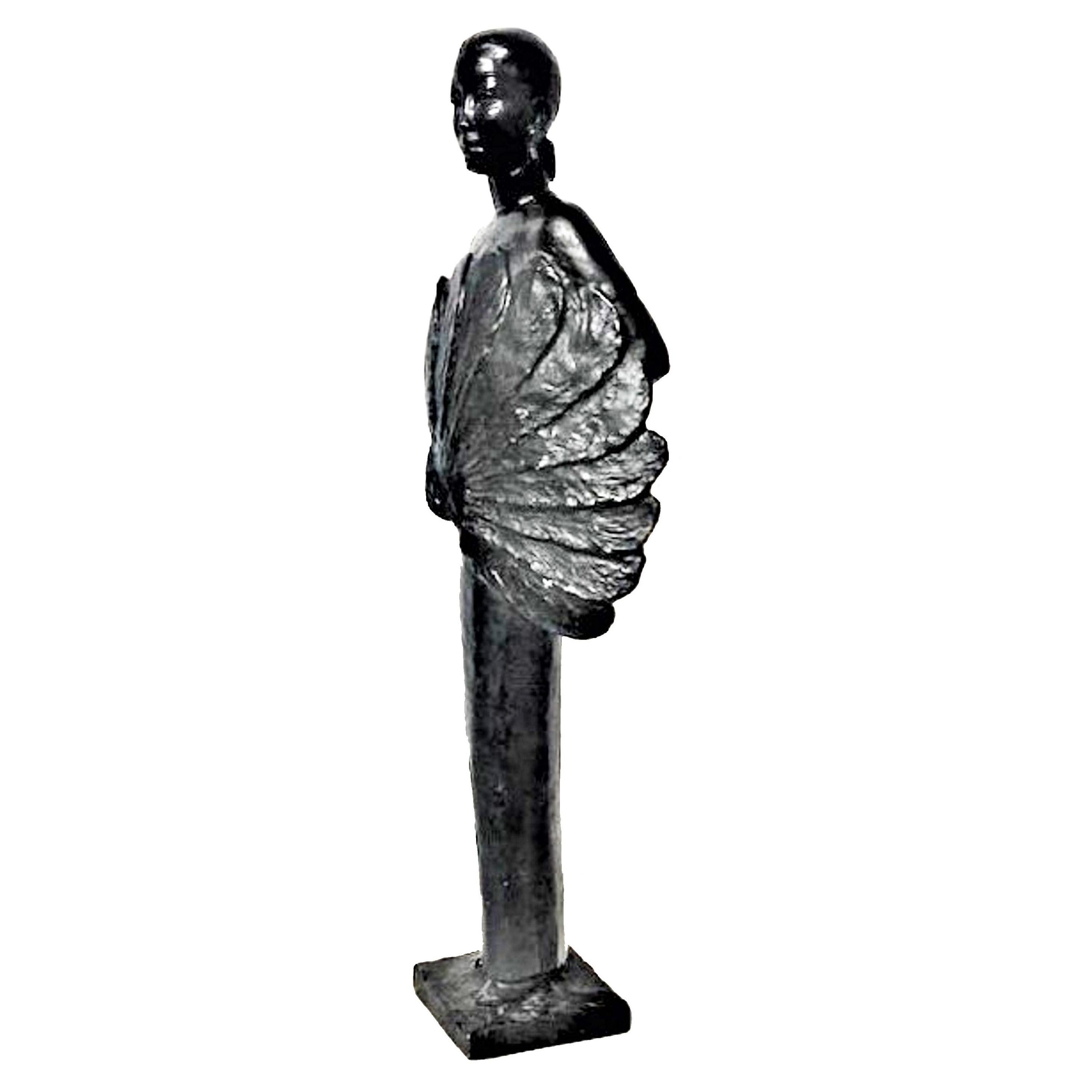Items Similar to Ernst Seger, David and Lion, German Art Deco Patinated Bronze Sculpture, c. 1920
Want more images or videos?
Request additional images or videos from the seller
1 of 12
Ernst Seger, David and Lion, German Art Deco Patinated Bronze Sculpture, c. 1920
About the Item
Signed “E. Seger”.
Black patina.
Dimensions
Height: 8 inches (20cm)
Width: 7.5 inches (18.75cm)
Depth: 8.5 inches (21.25cm)
THE BIBLE STORY
Samuel 17:34-36
Originally, Saul would not allow David to fight Goliath (17:33). Saul’s reason was simply that Goliath would be stronger than David. David was young and he did not have the experience to fight such a capable enemy as Goliath. David was likely to die, and his death would benefit nobody.
Often people wrongly imagine that they are acting in faith (in other words, that they are trusting God). Really, they are acting in a foolish manner, as if the danger is not real. They are not trusting in God, but in their own thoughts, hopes and desires.
David’s reply to Saul shows us his attitudes. This reply explains clearly why David had offered to fight Goliath. In other words, it shows how David considered himself able to defeat Goliath.
Like many boys and young men in Israel, David had worked as a shepherd. That is, he looked after sheep. He was responsible to look after those sheep in every way. In particular, he had to protect them from wild animals.
Lions and bears are some of the fiercest large wild animals. They were common in Israel at the time of the Bible. They are much stronger than a man (see for example 1 Kings 13:24 and 2 Kings 2:24). Only the bravest and strongest men were able to kill a lion (Judges 14:5-6; 2 Samuel 23:20). However, David had killed both a lion and a bear. He had killed animals that were stronger than him.
David did not believe that the strongest man would win the fight. David had a close relationship with God; he was trusting God to rescue him (17:37). David was not pretending that there was no danger. However, God’s Holy Spirit was active in David’s life (16:13). By the power of his Holy Spirit, God had given David the faith (trust in God) to fight Goliath. Because David really was trusting God, there was no reason for him to be afraid of Goliath.
THE ARTIST
Ernst Seger (1865 1939), born in Neurode (Nowa Ruda, now Poland), studied sculpturing from 1884 at the Kunstschule in Breslau under Robert Härtel. From 1886 he worked in the Atelier of Christian Behrens, where he created the Eichendorff-Memorial for the Silezian City of Neisse. From 1893 to 1894 Seger stayed in Paris where he worked in the atelier of Auguste Rodin. However, Seger finally chose a ‘Jugenstill’ and a more ‘naturalistic’ or ‘Neuklassizismus’ style. His sculptures, modelled like the Greek antiques, were later greatly admired by the National Socialists.
At the end of 1894 Ernst Seger went back to Berlin, founded his own atelier and created the Kaiser Wilhelm I memorial for the Silesian City of Glatz. In 1897 Seger created the sculpture ‘Jugend’ (‘Youth’), which was displayed at the ‘Große Berliner Kunstausstellung’ in 1898, at the ‘Große Berliner Kunstausstellung’ in 1899, at the ‘Münchener Glaspalast Ausstellung’ in 1899 and at the ‘Münchener Glaspalast Ausstellung’ in 1908. As a sculptor Seger regarded this as his first relevant work, his breakthrough. A copy of the sculpture in bronze, 1.60 metres high, was placed in the ‘Scheitniger Park’ in Breslau (now Wroclaw). In 1898 Segers ‘Diana’, the Roman Goddess of the Hunt, the Moon and Childbirth, was unvealed in Park Szczytnicki, Breslau, Polen (earlier ‘Schneitniger Park’). Until 1945 the sculpture stayed in the Schneitniger Park, Breslau. This part of the park is still called ’Dianagarten’.
After the turn of the century the elegant female dancers and nudes by Seger gained great popularity. In 1905 Ernst Seger created -together with the sculptor Bernhard Sehring- the ‘Bismarck Brunnen’ (‘Bismarck Fountain’) in Breslau. This memorial-fountain (which still exists) represents the allegories ‘Kampf’ and ‘Sieg’ (‘Battle and Victory’). Seger’s ‘Verwundete Amazone’ (‘Wounded Amazon’), displayed at the Grosse Münchner Kunstausstellung in the Glaspalast in 1908, was placed in the garden of the ‘Kaufhauses Wertheim’ in Berlin. In the same year he was appointed as a professor. Seger’s marble sculpture ‘Kypris’, created in 1916, was placed in the Alten Nationalgalerie in Berlin. In 1925 the City of Berlin acquired his sculpture ‘Anbetung’ and placed it at the Johannaplatz. ‘Storchenbrunnen’ (‘Stork-fountain’), was placed in 1931 at the Adolf-Scheidt-Platz in Berlin. In 1935 the American newspaper publisher William Randolph Hearst bought Seger’s sleeping ‘Ganymede’.
During the Third Reich Ernst Seger was commissioned numerous Hitler busts; in 1933 one of them was placed in the hall of honour at the ‘Internationale Funkausstellung’(‘German Radio Exposition’) in Berlin. At the turn of the year 1933/1934 he created a relief of ‘Hindenburg and Hitler’. Despite Segers popularity and fame his life-size ‘Am Ziel’ (‘At the Finish’) which had stood at the edge of the Berlin Wannsee since 1934, was melted down in 1940, as bronze was needed for the war-industry (‘Am Ziel’, 190 cm high, was displayed for the first time at the exhibition ‘Hundert Jahre Berliner Kunst’, 1929, organized by the Verein Berliner Künstler).
At the Great German Art Exhibitions Seger was, until his death in 1939, represented with seven sculptures, including ‘Sportlerin’. Adolf Hitler bought ‘Lebenskraft’ (‘Vitality’) for 15,000 RM, as well as ‘Gewichtheber’ (‘Weightlifter’) and ‘Kraftgefühl’ (‘Feeling of Power’).
Ernst Seger died in August 1939 in Berlin. Seger’s gravestone at the Südwestkirchhof Stahnsdorf bears his marble relief ‘Der Bildhouwer und sein Gedanken’, which was displayed at the Grosse Berliner Kunstausstellung 1921.
- Creator:Ernst Seger (Sculptor)
- Dimensions:Height: 8 in (20.32 cm)Width: 7.5 in (19.05 cm)Depth: 8.5 in (21.59 cm)
- Style:Art Deco (Of the Period)
- Materials and Techniques:Bronze,Patinated
- Place of Origin:
- Period:
- Date of Manufacture:circa 1920s
- Condition:Wear consistent with age and use. We make our best effort to provide a fair and descriptive condition report. Please examine photos attentively, as they are part of the description. Send us a message to request more details or discuss price.
- Seller Location:New York, NY
- Reference Number:1stDibs: LU2819324653472
About the Seller
5.0
Vetted Seller
These experienced sellers undergo a comprehensive evaluation by our team of in-house experts.
Established in 1993
1stDibs seller since 2017
68 sales on 1stDibs
Typical response time: 2 hours
- ShippingRetrieving quote...Ships From: New York, NY
- Return PolicyA return for this item may be initiated within 10 days of delivery.
More From This SellerView All
- Italian Art Deco, Equestrian Groom, Patinated Bronze Sculpture, 1920sLocated in New York, NYSigned on the base: “DITA”. Impressed foundry stamp.Category
Vintage 1920s Italian Art Deco Figurative Sculptures
MaterialsBronze
- Alexandre Zeitlin, Faerie, American Art Deco Patinated Bronze Sculpture, C. 1920By Alexandre ZeitlinLocated in New York, NYDETAILS Signed by the author and stamped with Roman Bronze Works Foundry NYC stamp. DIMENSIONS Height: 14.5 inches Width: 6.5 inches Depth: 9inches ABOUT THE SCULPTURE Made of black patinated bronze, the fairy literally floats in the air thanks to a wonderful composition using a huge light scarf fluttering in the wind. ABOUT THE SCULPTOR Alexandre Zeitlin (French/American, 1872 - 1946) was an outstanding sculptor known for his portrait busts. Alexander Zeitlin was born in Tiflis, Georgia (Russian Empire), in 1872. He held his first art exhibition in his hometown in his early teens. At first, the novice sculptor studied at the Vienna Academy of Fine Arts (1890–1894), where his portrait busts of Archduke Otto were noted. He then studied at the École des Beaux-Arts in Paris. Zeitlin's ‘Despair’ statue and a portrait bust of the opera singer Jeanne Hatto were among the first to receive public recognition. He became known for his portrait busts. Zeitlin received the Ordre des Palmes académiques (1903) for the busts of Camille Flammarion...Category
Vintage 1920s North American Art Deco Figurative Sculptures
MaterialsBronze
- Soccer Player, German Art Deco Patinated Bronze Sculpture, ca. 1930’sLocated in New York, NYArt Deco Soccer Player Patinated Bronze Sculpture Germany, ca. 1930’s DIMENSIONS Height: 9.5 inches Width: 6.75 inches Depth: 2.75 inches ABOUT A rare, laconi...Category
Vintage 1930s German Art Deco Figurative Sculptures
MaterialsBronze
- Lucile Swan, Fan Lady, American Art Deco, Patinated Bronze Sculpture, ca. 1920'sLocated in New York, NYSigned on the plinth “Lucile Swan” Valsuani Foundry stamp. Original black patina. Dimensions Height: 14.5 inches (36.25cm) Width: 5 inches (12.5cm) Depth: 2.5 inches (6.25cm) LUCILE SWAN (American, 1887-1965) was born in Sioux City, Iowa. She attended the Art Institute of Chicago from 1908 to 1912. In December 1912 she married painter Jerome Blum...Category
Vintage 1920s French Art Deco Figurative Sculptures
MaterialsBronze
- Fall of Eve, Art Deco Multi-Color Patinated Bronze Sculpture, ca. 1920Located in New York, NYBearing a clear aesthetic influence of the Art Deco era, this wonderfully beautiful image of the progenitor Eve is a Western-European school sculptural portrait of a stunningly beaut...Category
Vintage 1920s French Art Deco Figurative Sculptures
MaterialsBronze
- Jenő Kerényi, Magician, Hungarian Art Deco Patinated Bronze Sculpture, 1930sLocated in New York, NYSigned KEREMYI on the back of the plinth. Some patina abrasions are noticeable in the back area. The white Carrera marble base obviously is a later replacement. Dimensions: Height 14.75” Width 11.75” Depth 7.75”. Jeno Kerényi...Category
Vintage 1930s Hungarian Art Deco Figurative Sculptures
MaterialsBronze
You May Also Like
- Bronze Art Deco Lion SculptureLocated in Oakland, CAAn Art Deco era bronze statue of a lion with a great marble base of three tones inlaid in geometric shapes. The lion is powerfully rendered, its expression and musculature well defined. Throughout history, the Lion has been known as the “king of the jungle” but has also served as symbol of protection for a home or public building. The task of scaring off the “demons” and keeping away intruders is the reason you can find sculptures of lions guarding structures from the ancient Ishtar Gates...Category
Vintage 1930s French Art Deco Animal Sculptures
MaterialsMarble, Bronze
- Art Deco Bronze Animal Lion SculptureLocated in ITArt Deco bronze animal lion sculpture Size: W 38 cm, D 14 cm, H 38 cm Original patina. A video of the item Is available upon request...Category
Early 20th Century French Art Deco Animal Sculptures
MaterialsBronze
- Patinated Bronze Reclining Lion Sculptures, PairLocated in New York, NYPair of Patinated Bronze Reclining Lion Sculptures, apparently unmarked. Each 13" H x 24.5" W x 10" D.Category
20th Century Mid-Century Modern Animal Sculptures
MaterialsBronze
- Life-Size Art Deco Patinated Bronze Greyhound SculptureLocated in Forney, TXA life size Art Deco patinated bronze figural dog sculpture, most likely Italian, early/mid-20th century. Fine quality, exceptionally execute...Category
Early 20th Century Art Deco Animal Sculptures
MaterialsBronze
- Art Deco Patinated Female Nude Bronze, Heinrich Faltermeir, GermanyLocated in Lambertville, NJA rare bronze by renowned artist Heinriech Faltermeir (1900-1999). A sculpture of a young female nude with arms stretched above head, fine detailed casting. Signed around the botto...Category
Vintage 1930s German Art Deco Figurative Sculptures
MaterialsBronze
- Original Art Deco Bronze and Marble Sculpture, French, C1920By Aurore OnuLocated in Forest Row, East Sussex'Mask Dance' An Art Deco bronze sculpture by Aurore Onu depicting two nude female figures performing a theatrical dance. The two holding a double sided face dangling between them. Se...Category
Vintage 1920s French Art Deco Figurative Sculptures
MaterialsMarble, Bronze
Recently Viewed
View AllMore Ways To Browse
German Art 1920
German Art Deco Gold
Kills Germany
1925 Exhibition Decorative Art
Lion Relief
Man And Lion
Roman Lion
Large Size Garden Sculptures
Bronze Sculpture Garden Large
Nude Female Sculptures Large
Boys Study
Female Sculpture Garden
Sculpture Diana
Roman Sculpture Man
1920s Deco Bust
Large Art Deco Figurative Sculpture
Greek Female Sculpture
Life Size Antique Sculptures Sculpture
